Floods
Floods are the second most common disaster threat in Montana. Flooding can occur as a result of heavy precipitation, ground saturation, overflowing rivers, ice and debris jams, rapid snowmelt, and dry wash.
Flooding can happen suddenly, and it can pose significant risks to lives, property, and infrastructure. Being prepared for flooding and knowing what to do during and after floods, can help minimize the risks when flooding does occur.
The following are some things you can do to prepare before floods.
-
Assess your risk for flooding. Do you live in a flood plain, in a low-lying area, or along the coast? Are there creeks and streams nearby that fill up when it rains? Are there low-lying areas near or around your home’s perimeter?
-
If your risks are high, consider getting flood insurance. Most homeowners insurance policies do not cover damage from rising water.
-
You may be able to reduce your risks by improving drainage near or around your home. Install drains or dig ditches to help divert water before it has a chance to rise.
-
In some cases, sandbags can prevent floodwaters from entering your home. Purchase sandbags if you may need them, and be sure to fill them up ahead of time.
-
When the threat of flooding is high, evacuate early. Don’t wait until it’s already flooded. If you have time, shut off the electricity before you go.
-
Create your Disaster Supply Kit and keep it in an easily accessible place.
- Keep your Disaster Supply Kit handy so you can grab it and go in case you must evacuate suddenly.
- Don’t underestimate the power of floodwaters. They can move swiftly, often faster than they appear. They are very dangerous. A car will float in only a few inches of swiftly moving water.
- Never allow children to play near floodwaters.
- Adults are also at risk. As little as six inches of moving water can knock an adult off their feet.
- If you become stranded by floodwaters and must escape, wear a life jacket. In some situations, it may be safer to climb onto a rooftop or into a tree and wait for rescue.
- Never drive into flooded roadways. Water can look like it’s only a few inches deep when it’s actually several feet deep. All it takes is one foot of water to make a car or SUV float.
- Moving floodwaters can sweep away your car in a matter of seconds. If you see water on the road, turn around and don’t drown.
Wait for local emergency management officials to give the all-clear before returning home.
When it’s safe to go home, take the following precautions:
- Do not enter your home if the electricity may still be on.
- Beware of displaced wildlife, such as snakes and bats. Do not handle them.
- Wear sturdy shoes, long pants, long sleeves, and gloves when cleaning up.
- Follow safety recommendations when using chain saws and power tools.
- Help prevent mold by disinfecting household items with a bleach solution.
Additional Flood Resources
Montana Department of Natural Resources:
Montana Department of Environmental Quality:
Flooding Resources | Montana DEQ
Montana Department of Health and Human Services:
Montana Department of Transportation (MDT):
MT Department of Transportation 511
Montana Department of Commerce:
Flood Information for Travelers -- Link coming soon!
The State of Montana's Flood Recovery Website from 2022:
Montana DES, DNRC, DEQ, DPHHS, MDT, and Department of Commerce post health and safety information, situation updates, and travel information on their Facebook accounts. Follow these state agencies on social media for current updates on conditions.
Additional flood information:
NOAA - National Weather Service - Water
Owlie Skywarn's Children's Activity Booklet - Floods
Dam Safety with Beaverly Children's Coloring Book
Water Utility Response On The Go | US EPA
Prepare for Flood After Fire with Flood Insurance (fema.gov)
Flood Safety Education and Outreach (weather.gov)

